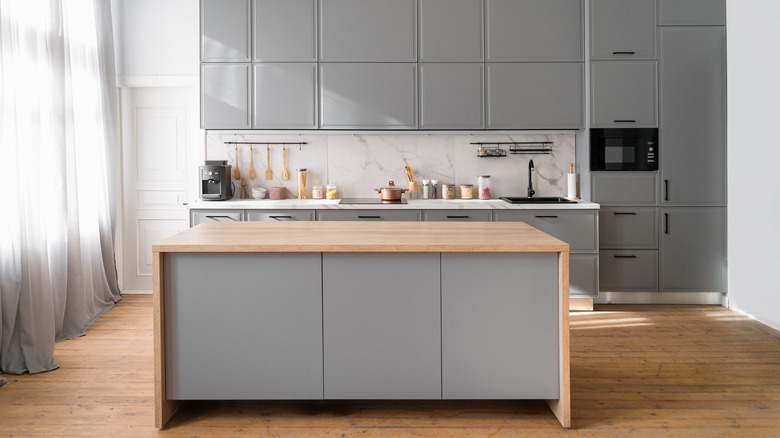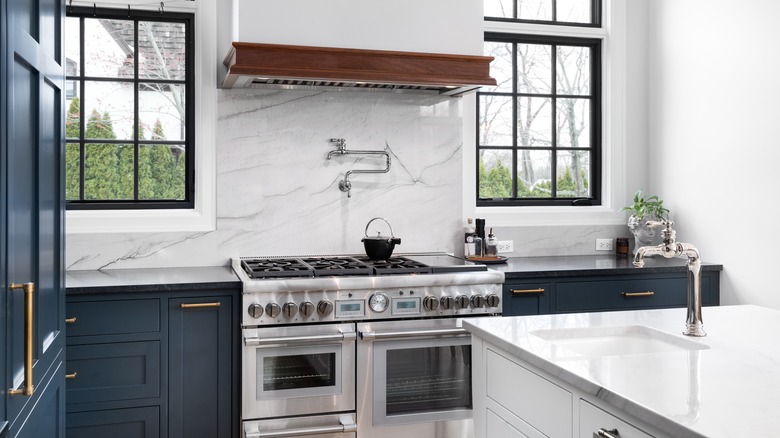Tips For Mixing Different Countertop Materials To Make A Stunning Statement
Your kitchen doesn't have to be uniform or monochromatic to make an impression. In fact, many kitchens are leaning toward a more mismatched décor theme that incorporates varying materials for a more eye-drawing effect. One area you may have forgotten to consider that can work with different materials is your countertops. By mixing elements like stone and wood or even varying minerals and rocks, you can create a dynamic and dimensional setting that feels warm and chic. Tricks to nailing this trend include staying away from overly patterned combinations, noting that different materials require unique cleaning methods, and keeping practicality in mind.
Featuring versatile elements in your kitchen conveys that you enjoy functionality and design, so incorporating mixed materials is a great way to showcase your appreciation for style. There are many countertop options across the internet and in brick-and-mortar stores. Therefore, choosing your mediums is the first step to creating a multi-surface layout.
Mix stone with wood to bring nature into your kitchen
Consider both aesthetics and practicality when choosing countertop materials. While you want a stylish atmosphere, you also need to understand that these surfaces are meant to be cooked on and require regular cleaning. Opting for high-maintenance selections could become grating in the long run. Pairings like stainless steel can complement wood materials, bringing an industrial look balanced by the natural ambiance created by the timber.
Maple, oak, and black walnut all produce rustic finishes that complement the severity of stainless steel. This creates an inviting ambiance in an area that can be very busy and social, and knowing they mix well with other materials before you buy helps. Placement will vary depending on your kitchen's layout. If you have an island, this is a great place to add a material different from your sink and attached countertops.
Natural stone materials also blend well with wood, bringing an earthy, cozy vibe to your kitchen. Stone countertops give your kitchen a rustic farmhouse feel; they are also durable, and many, like quartz, are low-maintenance. When choosing stone and wood, consider the patterns in granite, limestone, and slate and how these will contrast with the wood's grain. Excessive patterns can make the combination feel too busy or chaotic, which you want to avoid. If your stone has a lot of texture, choose a smooth wood that doesn't feature as many natural irregularities.
Combine steel with natural elements to create a softer look
Expensive countertop materials like granite and quartz aren't ideal if you're working with a budget. When it comes to wood, maple and oak are moderately priced, so they are friendly to many financial plans. Black walnut and oak tend to wear down faster than options like bamboo, so it might be a better pivot if your budget suits this durable and popular wood.
Practicality comes into play in both durability and cleaning methods. Products you'd use for wood won't always cut it for natural stone. Sealed granite can tolerate low amounts of bleach occasionally. However, it is imperative never to clean your granite countertops with Clorox wipes or anything containing acidic ingredients. Wood, stainless steel, and most stone countertops can be sanitized with water and gentle dish soap. As such, you only need to ensure you keep specialized products for tough stains on each material, as they may need to be treated differently.
Placement will vary depending on your kitchen's layout. As mentioned, a kitchen island allows you to experiment with different countertop materials. Introducing wood or stainless steel here makes them a focal point, while the stone acts as a frame or border that gently complements the island.


